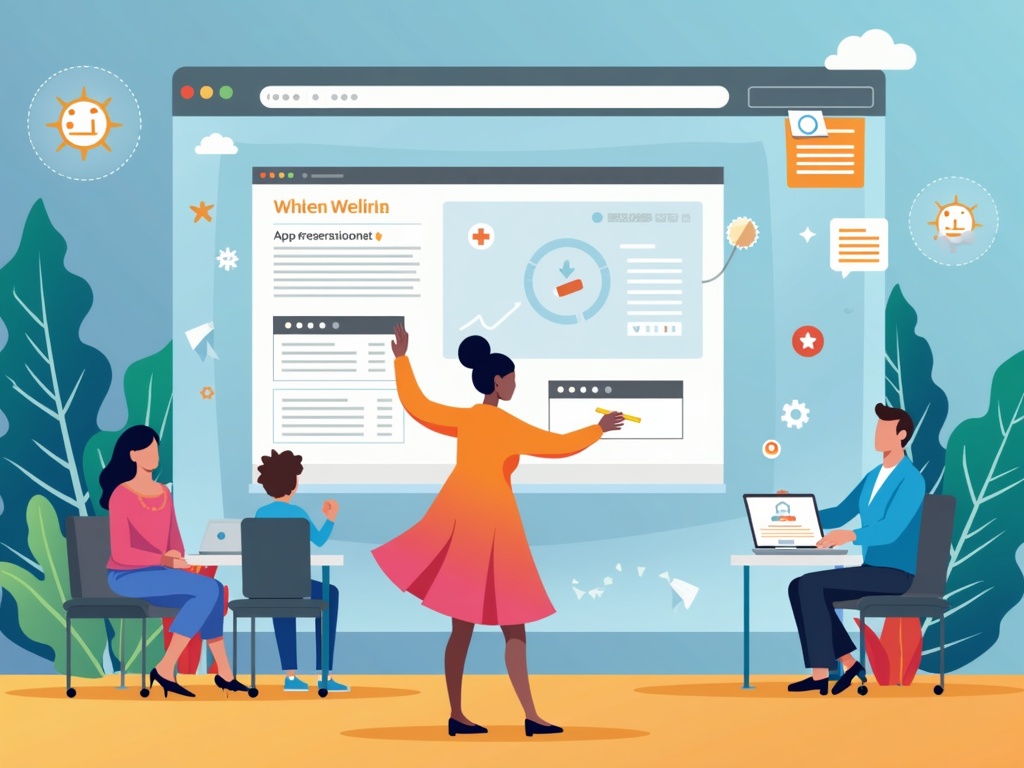Steal These Webinar Registration Page Examples: Proven Designs That Convert
Ever felt like your webinar registration page was a digital tumbleweed—lots of page views, but precious few sign-ups? You pour your heart into crafting stellar webinar content, but if the gateway to your knowledge-packed session is clunky, confusing, or just plain unappealing, you're losing potential attendees left and right. The truth is, a high-converting webinar registration page is more than just a form; it's a carefully constructed sales pitch, a trust-builder, and a persuasive invitation all rolled into one. Let's dive into some webinar registration page examples that are proven to convert, dissecting what makes them tick and arming you with actionable insights to transform your own landing pages into lead-generating machines.
Why Your Webinar Registration Page Matters (More Than You Think)
Think of your registration page as your webinar's first impression. It's the digital handshake, the Hello, nice to meet you, that sets the tone for what's to come. A poorly designed page screams unprofessionalism, lacks credibility, and ultimately, drives people away. A well-crafted registration page, on the other hand, does the following:
- Captures Attention: Grabs visitors from the moment they land on the page.
- Communicates Value: Clearly articulates the benefits of attending the webinar.
- Builds Trust: Establishes you as a credible authority in your field.
- Removes Friction: Makes registration quick, easy, and painless.
- Drives Conversions: Encourages visitors to actually sign up!
Neglecting your registration page is akin to hosting a gala in a dimly lit, undecorated room. Even if the speakers are brilliant and the food is divine, the lackluster environment will dampen the experience and impact attendance.
Key Elements of a High-Converting Webinar Registration Page
Before we dissect specific examples, let's lay the groundwork. A truly effective webinar registration page typically incorporates these essential elements:
1. Compelling Headline
Your headline is your hook. It's the first (and sometimes only) thing people will read. It needs to be benefit-driven, attention-grabbing, and crystal clear about what attendees will gain from the webinar. Think Solve [Problem] with Our Expert Webinar or Learn the Secrets to [Desired Outcome] in 60 Minutes.
2. Engaging Visuals
Images and videos can dramatically increase engagement and conversion rates. Use a high-quality image of the speaker, a relevant graphic, or even a short video trailer showcasing the webinar content. Visuals break up text, add personality, and make the page more visually appealing.
3. Clear Value Proposition
Answer the What's in it for me? question. Spell out the specific benefits attendees will receive by investing their time in your webinar. Will they learn a new skill? Discover a proven strategy? Gain access to exclusive resources? Be explicit! Use bullet points or concise paragraphs to highlight key takeaways.
4. Speaker Bio & Credibility
Establish your authority and expertise. Include a brief bio of the speaker(s), highlighting their relevant experience, accomplishments, and credentials. Use testimonials or endorsements from satisfied clients or attendees to further build trust.
5. Optimized Registration Form
Keep it short and sweet. Only ask for the information you absolutely need. Name and email address are usually sufficient. The more fields you ask for, the lower your conversion rate will be. Ensure the form is easy to fill out on all devices (desktop, mobile, tablet).
6. Concise Webinar Details
Clearly state the date, time, and duration of the webinar. Include the time zone to avoid confusion. Consider offering multiple time slots to accommodate different geographic locations. Make it easy for people to add the webinar to their calendars with a one-click calendar integration.
7. Strong Call to Action (CTA)
Your CTA is the final nudge that encourages visitors to register. Use clear, concise, and action-oriented language, such as Register Now, Save Your Spot, or Join the Webinar. Make the CTA button prominent and visually appealing, using contrasting colors to make it stand out. A/B test different CTA copy to see what works best for your audience.
8. Social Proof
Leverage the power of social proof by displaying testimonials, social media mentions, or statistics about past webinars. Seeing that others have found value in your webinars can significantly boost confidence and encourage sign-ups. Examples include Join 1,000+ Professionals or Rated 4.8/5 Stars by Past Attendees.
9. Mobile Optimization
In today's mobile-first world, your registration page must be fully responsive and optimized for mobile devices. Ensure the page loads quickly, the form is easy to fill out on a small screen, and the CTA button is easily tappable. Use a mobile-friendly design that prioritizes readability and usability.
Webinar Registration Page Examples: Deconstructed
Now, let's examine some real-world examples of effective webinar registration pages and dissect what makes them work:
Example 1: The Benefit-Focused Approach
This page leads with a compelling headline that directly addresses a common pain point of its target audience. It immediately promises a solution and highlights the specific benefits of attending the webinar. The use of bullet points further emphasizes the value proposition, making it easy for visitors to quickly grasp the key takeaways.
Key Takeaways:
- Strong, benefit-driven headline
- Clear and concise value proposition
- Prominent CTA button
Example 2: The Authority Builder
This page focuses on establishing the speaker's credibility and expertise. It features a professional headshot of the speaker and a detailed bio highlighting their relevant accomplishments. The use of testimonials from satisfied clients adds social proof and further builds trust.
Key Takeaways:
- Professional speaker headshot
- Detailed speaker bio with relevant experience
- Testimonials from satisfied clients
Example 3: The Visual Storyteller
This page utilizes a short video trailer to showcase the webinar content and engage visitors. The video provides a sneak peek of what attendees can expect and helps to create a more personal connection with the speaker. The use of visually appealing graphics further enhances the overall design.
Key Takeaways:
- Engaging video trailer
- Visually appealing graphics
- Concise and informative description
Common Mistakes to Avoid on Your Webinar Registration Page
Even with the best intentions, it's easy to make mistakes that can sabotage your registration page's performance. Here are some common pitfalls to avoid:
- Cluttered Design: Too much text, too many images, and a confusing layout can overwhelm visitors and drive them away. Keep the design clean, simple, and easy to navigate.
- Vague Headline: A headline that doesn't clearly communicate the webinar's value proposition will fail to capture attention. Be specific and benefit-driven.
- Lack of Social Proof: Failing to showcase testimonials, social media mentions, or statistics can erode trust and make potential attendees hesitant to register.
- Too Many Form Fields: Asking for unnecessary information can deter people from completing the registration form. Keep it short and sweet.
- Slow Loading Speed: A slow-loading page can frustrate visitors and cause them to abandon the registration process altogether. Optimize your images and use a fast hosting provider.
- Ignoring Mobile Optimization: In today's mobile-first world, your registration page must be fully responsive and optimized for mobile devices.
A/B Testing: The Key to Continuous Improvement
The best way to optimize your webinar registration page is to continuously test different elements and track the results. A/B testing allows you to compare two versions of a page and see which one performs better. Test different headlines, images, CTA buttons, form fields, and even page layouts. Use a reliable A/B testing tool and track key metrics like conversion rate, bounce rate, and time on page. Analyze the data and make adjustments based on the results. Remember, what works for one audience may not work for another, so continuous testing is essential.
Beyond the Page: Driving Traffic to Your Registration Page
A perfectly optimized registration page is useless if no one visits it. You need to actively promote your webinar and drive traffic to your landing page. Here are some effective strategies:
- Email Marketing: Send targeted emails to your subscriber list, highlighting the benefits of attending the webinar and including a direct link to the registration page.
- Social Media Promotion: Share engaging posts on social media platforms, using eye-catching visuals and compelling copy to encourage sign-ups. Consider running targeted social media ads to reach a wider audience.
- Content Marketing: Create blog posts, articles, or eBooks related to your webinar topic and include a call to action to register.
- Partnerships: Collaborate with other businesses or influencers in your industry to promote the webinar to their audience.
- Website Promotion: Add a prominent banner or call to action on your website, directing visitors to the registration page.
Final Thoughts: Your Webinar Registration Page is a Conversion Machine
Your webinar registration page is more than just a form; it's a vital component of your overall webinar marketing strategy. By understanding the key elements of a high-converting page, avoiding common mistakes, and continuously testing and optimizing, you can transform your registration page into a lead-generating machine. So, go ahead, steal these examples, adapt them to your own brand and audience, and watch your webinar attendance soar!


